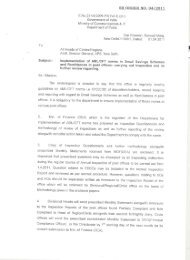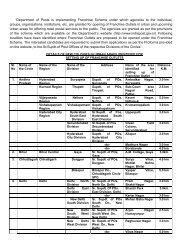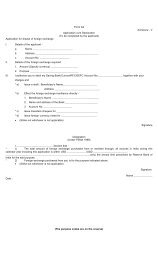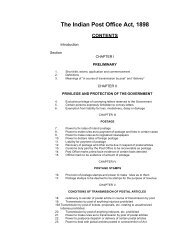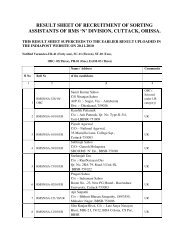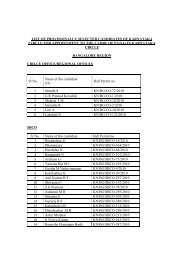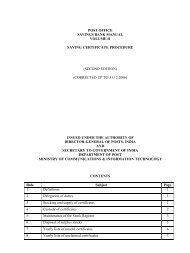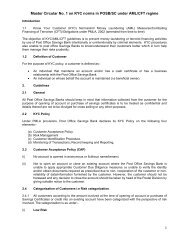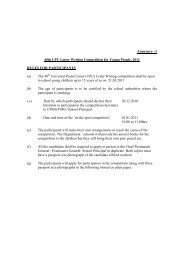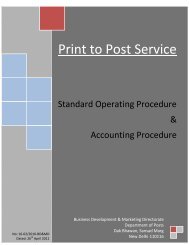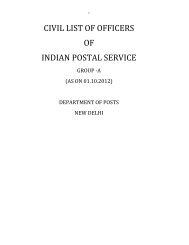Postal Manual Vol. VIII - India Post
Postal Manual Vol. VIII - India Post
Postal Manual Vol. VIII - India Post
Create successful ePaper yourself
Turn your PDF publications into a flip-book with our unique Google optimized e-Paper software.
(d) cord No. 2 (ball twine)- one ball for 40 bundles of 50 letters or for 700 dosuti or registered<br />
bags;<br />
(e) cord No.3 (country twine) – one seer for 1,000 dosuti bags or 500 canvas bags; this twine is<br />
supplied to foreign mail sections only;<br />
(f) dusters – one for each set or office every three months.<br />
(g) pencils – one black and one blue to each sorter per month;<br />
(h) pens – two steel nibs per man per month;<br />
(i) sealing wax – one seer for 800 bags, or for 275 insured bags.<br />
(4) The Superintendent should furnish each record clerk with an extract (in form SK-10)<br />
from the sanctioned consolidated stationery rate list, showing the number of quantity of the several<br />
articles of stationery to be supplied half-yearly for the use of the record office itself and that of<br />
each set of the several sections and mail offices attached to it. Indents will be prepared in duplicate<br />
by the record clerks in accordance with the extract rate lists; and the Superintendent should, before<br />
countersigning any indent, check it with the consolidated list and see that the requisitions are<br />
within the limits of the sanction. He should enter in the appropriate column of both the original and<br />
duplicate copies of the indent the number or quantity of the articles passed and then countersign<br />
both copies. The original indent should be forwarded to the stock depot for compliance in<br />
sufficient time to reach it not later than the 25 th of the month in which the indent was due to be<br />
received by the Superintendent, and the duplicate should be returned to the indenting officer.<br />
(5) No change in the sanctioned consolidated stationery rate list may be made without the<br />
approval of the Head of the Circle. When any change is necessary, a fresh list showing the revised<br />
scale of supply, with the reasons for the revision, should be submitted in duplicate by the<br />
Superintendent for the sanction of the Head of the Circle which, when received should be<br />
communicated to the Officer concerned in revised extract lists.<br />
WORK AT HEADQUARTERS<br />
Superintendents of <strong>Post</strong> Offices<br />
219. General remarks.- As the Superintendent’s headquarters will ordinarily be at a<br />
station where there is a head office, the following special rules are laid down for his guidance<br />
while at headquarters; but they do not relieve him from the periodical inspection of the office at his<br />
headquarters. These rules also show what a Superintendent is required to do when he visits any<br />
other head office. When it is stated in the following rules that the Superintendent should take any<br />
action regarding irregularities that he may notice, it is assumed that the office is under his control.<br />
220. Supervision of post office at headquarters.- The Superintendent is required<br />
frequently to visit the post office at his headquarters. He should sometimes pay his visit during the<br />
busy hours of the day and watch the work with the public in each department; at other times he<br />
should be present when important mails are delivered or prepared for despatch; and he should also<br />
at times visit the office in the evening, when the accounts and office are about to be closed, and see<br />
the cash counted and checked with the head office summary and treasurer’s cash book which he<br />
should initial. Whenever he is present in the office at the time the postmaster is examining the<br />
accounts, he should see whether the work is done properly and thoroughly.<br />
NOTE.- The Superintendent must also frequently visit the Sub-Offices at his headquarters and carry<br />
out the checks noted in rules 221 to 228, in a general way and as applicable to the Sub-Offices. He should<br />
examine the general working conditions of the offices and take action to have the defects remedied on the<br />
spot.





